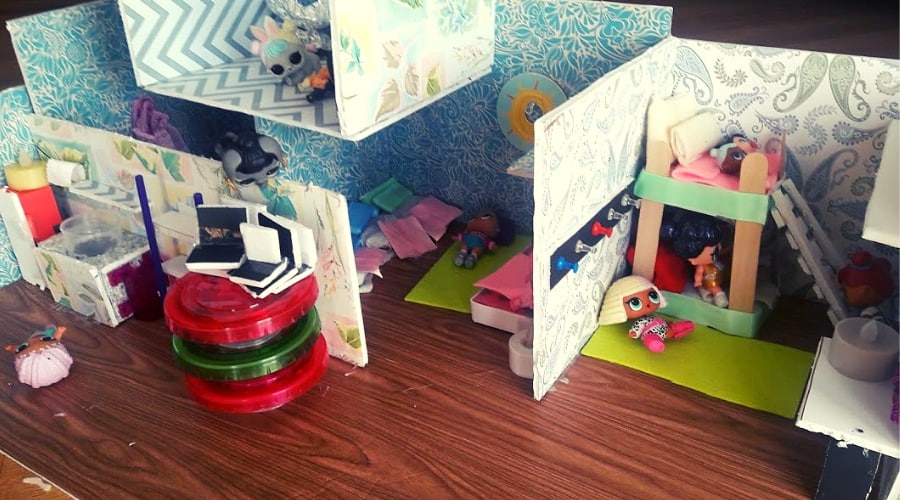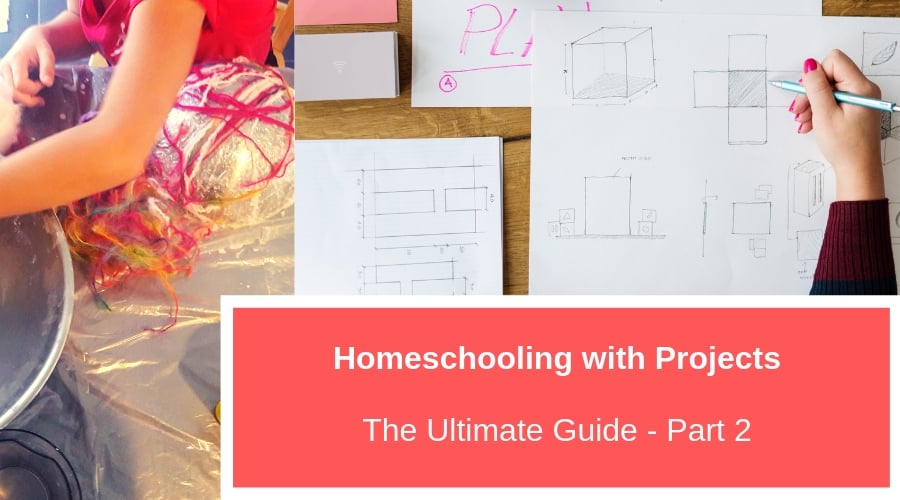
Please also see 2nd to 4th Grade At-Home Activities and Projects. Which can be used with the free 13 Week Unplugged Curriculum and Schedule, and the 4 Step Homeschool Planning and Organization.
You’d think that kids that homeschool without a curriculum have a lot of extra time, but they are often incredibly busy. One of the reasons is that they engage in undertakings that are multifaceted, and require a lot of time and focus, and even come back to it latter to continue to work on the project.
Mostly, it happens in their mind: thinking about how things are going to happen, what needs to come next, visualizing, estimating, weighing in the variables, compensating, concluding.
When parents allow kids to spend as much time as they need on a project, they might see their kid who can’t sit still spend hours as his work table shaping his vision and making things happen. Although the beauty of project-based learning is that it is dynamic, and not always requires to be siting down, you may need to stand to work on something, go to the store, sit and make lists, go around the house gathering supplies, sitting down again to put it all together…
As kids get older project-based learning takes a shape that resembles actual project management, but it is better if they start early so they gain familiarity and learn a lot about themselves in the process.
Project-based learning for the younger ages is child-led, there are activities that we refer to as projects here but for kids is more like another form of play. It is this connection with play that will lead kids to continue to engage in projects and thus learn through project-based activities.
What Is a Project
A project starts with an idea. Identifying the steps and completing those steps to develop a final product from the initial idea is the Project.
A project can be taken on by one person but may need others with different skills to complete the project. Depending on how complex or ambitious the project, it may require more people or can be done by just one kid. Often, projects need a leader. Most of the projects we list below can be undertaken by one or two people and may require an adult to guide kids through the process. However, the more projects kids take on, and the more responsibility they are given by the guiding adult, and more concepts they learn from the projects, the more capable they become to leading.
Parts of a Project
Concept development is part of the “pre-production phase” as well as viability. Once you have figured out you can do this thing and have an idea as to the most viable way to do it…
Identify all the steps you will need to take. Also the materials, and all the resources you will need in order to…
Make it happen – “Production” is when you use all the resources you gathered and start crossing all the steps or tasks off the list to reach your goals.
Completion – At this point, you are done. You should have an end product.
Projects by age/skill level, from Older to Younger:
1. Create a Play or Musical
Kids that are familiar with what a character is, and a story line can take this project on with other kids or on their own. There are different ways to do this:
-When kids are young some theater classes focus on creativity. So while the instructor may introduce or reinforce the notion of creating a character and a story, the kids are encouraged to create their own play.
-It can be a team project. If all the kids in the group are committed, kids may distribute tasks based on interest and skill. So that there may be kids that are too shy to act but are great at making props or costumes. There might be kids that love music and want to be in charge of the music and sound. Etc.
-But if you have a child that is inclined to literature or music, you can encourage him or her to come up with a character, write a story, and maybe even make a song for each story. It can be as simple or ambitious as they are comfortable with.
2. Exhibit Artwork, or Organize an Exhibition
For kids that love art exhibiting their work and even selling their work is a great way to getting their artwork out there, seeing how people react to their work and sharing their Art with other people is a big part of being an artist.
However, it takes planning, doing the work, submitting the art, delivering and having it ready for presentation. Depending on whether the work is being exhibited at an local Art Fair, a juried exhibition, a co-op, etc. there will be different parts that will define the project and require different planning and expectations.
3. Make a Green House
This is a project that involves, a fair amount of planning, building and science. From figuring out what is the best spot, to making a list of the supplies for all the different parts of the project, to deciding what to plant, to putting it together, finding the right people to help with different parts of it…The more granular the planning the smoother it will go. This is the kind of project that illustrates the beauty of project management at an early age.
4. Reorganize your closet
Or your room. Easier said than done! Kids are usually very intransigent about changing where their things live. Because their world is play and there is so much fantasy involved, there are so many moving parts to what to keep, where and why.
Even when they are a little older they may have collected so much stuff that organizing just their closet can be a big undertaking of: letting go of things, making a donate pile, making a yard sale pile, storage…storing items based on seasons, accessibility, how much they will be using it or wearing it. There are so many different criteria…Maybe they need more shelves or less shelves, drawers, etc.
5. Grow a monarch garden
There is so much fun and educational parts to this project. It is important to first educate yourself on the journey of monarchs, there are some beautiful short documentaries that you could watch together for inspiration. A field trip to a butterfly conservatory or natural science museum will be very timely. Then, you can set out on learning about the different plants to have in your garden and decide on a design. These are some sites where you can get some step to step how to and some important information to help your kids create a meaningful garden. Page with info for how to start one.
Another page with info on how to grow it.
6. Design a Game
Kids are always making up games, so even though this sounds ambitions games are not hard for kids to design. However older kids might get more sophisticated and want to design a role playing game. In this case, there are a lot of different parts of this project. Such as concept design, making decisions as to how this game will be played and how many people can play it, what materials will be needed. Perhaps there will be a set of characters, perhaps each character has different traits, weaknesses and strengths, or magical powers…Maybe they will design the game and the character on the computer or perhaps it will all be drawn by hand.
Maybe it is a card game, a strategy game, a board game.
7. Start a business
There is the production aspect, buying supplies, doing the math to figure out how much to buy of each item, figuring out if the business is profitable. And once they figure all that out they actually have to produce the product, identify milestones and commit to them. Etc.
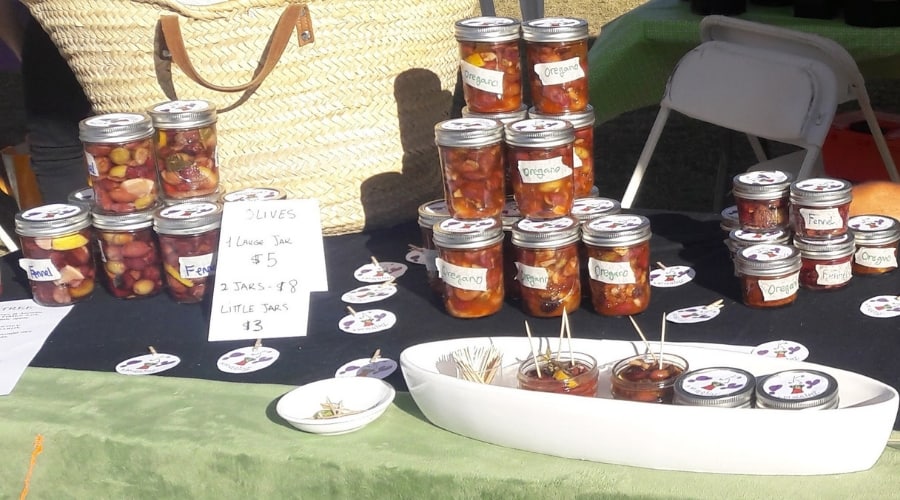
Whether kids are just selling their artwork or coming up with an ingenious product, there are so many moving parts to starting a business and the learning is so rich and varied that we have a Post just for How to help your child learn entrepreneurship and start a business.
8. Prepare a treasure hunt
Kids love Treasure Hunts. They love to engage in the searching, having one clue lead them to the next, and finding treasure. They also love hiding the treasure for their friends to find, making a map, writing clues, and coming up with ingenious ways to hide things.
This is a project in that it will require to figure out how many “treasures” to collect or buy depending on how many people will be participating on the hunt.
They will need to make a list of what will need to be treasure, to hide treasure, and to create clues.
They will need to decide the logistics of it all. It sounds easy but it can be quite a project for a kid.
9. Organize a birthday party
Think about the logistics! Prepare the list of guests and make the invitations. Prepare the decorations, the snacks, the birthday cake. Prepare activities, party favors, or crafts. Kids get very excited about birthdays. Yes, they appreciate a level of surprise but they do enjoy being able to participate in their won birthday preparations, or, throw a birthday party for a relative or friend.
10. Make a Costume
Figuring out what the costume is going to be.
Identify all the components of the costume.
Figuring out what can be used to create each part of the costume.
Figuring out where to procure or purchase the items.
Can anything be make? For example, if the costume is a Wizard, can you make the hat with a poster board or paper? You’ll need to paint it, or decorate it or both.
Will it require a trip to the fabric store or can you use something from around the house for the cape and the gown?
How would you make a beard? Perhaps some pillow filling?
What tools will you need? Hot glue gun, glue, scissors, needle and thread? Make a list of everything you need. It’s always easier to execute when you have know ahead of time everything that you need and that needs to be done.
11. Set up The Christmas Tree
Grown-ups get very excited about setting the Christmas tree. I have seen adults that have a method for this project and no-one can interfere. They can enlist helpers, but the grown ups run the show.
One of these years, give your child this responsibility and see how they embrace the challenge. Don’t worry if it’s not professional, it will be perfect.
Moms love setting the Tree, but kids live for this.
12. Make a Fashion Bag
If kids want to learn to sew or already know how to sew two pieces of fabric together they can easily build the bag. If they do not know how to sew, or they are too young to take on the task there are other ways to build a bag. The challenge is not so much in the construction but in comping up with a simple enough design that you can take on based on your skills.
13. Decorate your room
Or redecorate your room. Figuring out where to move the furniture, where to put the bed, the mirror, the bedside table or the desk. You may have to take into account where are the outlets for the lamps, or to plug in the computer. You may think about where is the window in relation to your bed? What about access to the closet? Do you need any extra space to play on the floor? Or to store certain items or toys?
What is the best way to move furniture? Will you need to relocate all the stuff on the tables before you move the tables? Etc.
14. Go shopping
Make a list. Find the items, look for sales, pay a the teller. At the end kids can say they did the shopping all by themselves.
15. Make a Blanket
Depending on the size of the blanket this may not be a one person job. The method is taking two pieces of fleece, flannel or another fabric that doesn’t fringe at the edges, making one inch thick (wide) cuts along the edge about four inches long, and tying them together.
It takes patience and practice cutting fabric. But it also is fun to pick out the textures and colors for the blankets, and they make great gifts.
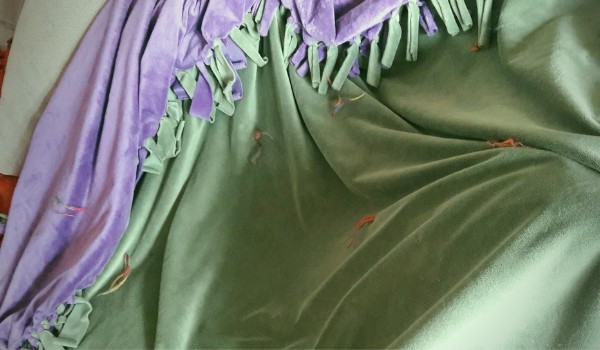
16. Make a Lemonade Stand
A lemonade stand can be a really fun activity for kids to do on their own. It’s a good introduction project because it is composed of different parts that are very easily achievable. Kids seek to do things independently and they love to make lemonade. More so if they can share with others and realize an actual transaction.
Our daughter made a lemonade stand when she was 5 with mom’s help, and we set up a little table at the driveway. After a while the mailman stopped by, got out of the car, and bought a lemonade and a cookie for $1. After that sweet experience our daughter would decide she was going to make lemonade all by herself, then she’d grab a box and a chair and set it out in the driveway. It’s all I could do to run out there and seat with her!
17. Organize a Yard Sale
Yard sales are great because it translates into a great project-based learning activity encompassing real life math skills and organization as well as learning to let go of beloved toys and things that they are not using anymore. Encourage your kid to make signs and put a few around the neighborhood.
Sorting out their items in different categories, pricing, giving change, are some of the things kids learn through this project. They may even make a little money. And at the very least they will learn to let go of toys and things and clear up some clutter in your house!
18. Making a gift bag, an envelope, wrapping a gift
It sounds simple but it takes a lot of dexterity to wrap a gift. Presentation is a big part of our culture and kids know that people appreciate a nicely presented gift. Making an envelope requires to gather the right size paper and to research how to make an envelope. Making a gift bag can be a challenge even for an adult, but if your child is up to the challenge it can be fun and there is so much understanding of geometry to take away from this project. It’s also a great skill to have for when you just need a gift bag.
19. Make a model of the solar system
This can be an activity as part of a science or astronomy class. See our Free Natural Science Guide for 5 – 8 Year Olds.
20. Build a Pirate Ship
If your child is interested in pirates, of you just want to suggest a fun activity, building a pirate ship can be done with cardboard, a box, or wood. There are some great kits out there like this Melissa & Doug one.
21. Design and make a shoe rack
If your kids are anything like what so many kids I know including mine, the shoes end up all over the house or come off in front of the door or in the middle of a room. If you find yourself repeating over and over “Put your shoes away, please” how about “Why don’t you design a shoe rack so we can all put our shoes in it when we walk into the house!” What can they use? Whatever you have at hand: cardboard, wood, boxes, etc. They will find a way to put it together depending on the age and skill -whether it’s put together like a puzzle, stacked, or nailed.
22. Make a Pillow
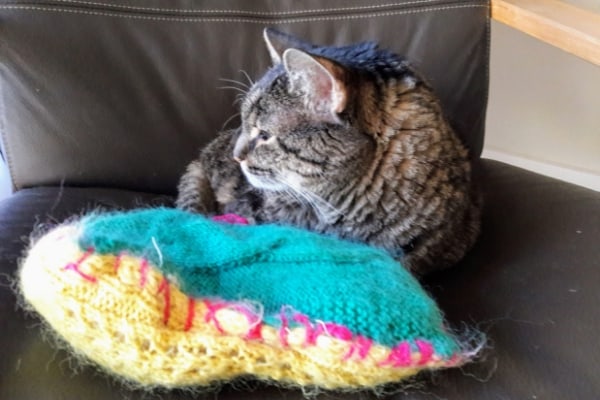
Go to the fabric store, pick out fabric, design how big your pillow will be – a 12 inch pillow is about as big I think a child can commit to sewing, any larger you’ll have to take on some of the sewing.
And deciding what to use for filling and how much filling you’ll need. Put it all together and enjoy the final product.
23. Build a Fort
Building a fort takes a lot of practice and skill. It takes so much practice to become fluent in the fort building arena. There is so much frustration that is taken for granted, but also there can be so much leaning about what works and what doesn’t.
24. Make a model of an Ecosystem

I have only seen this done once and it was by our daughter when she was 7 years old. But I watched it unfold and it went like this:
There was clearly a vision or concept before it all started. It may have sparked from a box someone gave her, or perhaps from the previous activity the day before when she was making a Toy Store for her dolls and play-dough pets.
The structure was put together in a certain way fastened very tightly with duck tape.
Then she made a mama fox and a baby fox. She asked if I would sit with her and help and I made a hen and a chick.
She said that the fox ate dear and she made something that looked like bacon.
Two hours latter she had a fox family, a chicken family, a bird family, and a dear that resembled something more like road-kill.
She came back to it the next day after all the playdough had hardened and made the caves, lairs, and nests for the different animals. She painted the background so it looked like a forest. She also made some incredibly realistic lizards (mom and baby) and a parrot family. She made nests out of masking tape and mounted them around the box. There were worms and seeds. She set a string with knots for the parrots to climb up to get to their nest, and some fun swings. Another three hours latter her vision was complete.
Kids at school sometimes engage in projects like this, but usually the learning is superficial. Each kid is assigned a part of the project by the teacher, they can’t indulge in their own vision, they don’t learn anything about themselves in the process, and they would never be allowed to spend so much time on the project.
25. Make-Up a Dance
This is a nice group activity or it can be done by themselves. Choreography is a project. It starts with an idea and kids model the steps, and synchronize the steps with music. They might chose a piece of music or perhaps the song can be the inspiration to kick off the project.
The performance is the culmination of the project and this can be a project in and of itself, where costumes are put together, audience is summoned and the stage is prepared, etc.
26. Make a Doll House
What doll doesn’t need a house at some point!
Whether you suggest this activity or your child asks she wants a doll house, encourage kids to build and make things themselves. There is so much joy in building…It’s no accident that LEGO is such a huge success. Kids love building things, but they don’t need an $60 LEGO Kit to make it happen.
Provide some boxes, foam-board, tape, hot glue, small nails. Show her how the materials can go together. Once you get her started she may come up with more ideas and may build them by herself out of necessity.
Praise her for her great work.
When she is old enough to be taught to use a cutting knife, with supervision, you may show her how to make a more straight house, or rooms lined with wall paper…See pic below.
27. Build a Cabin
We have a backyard with a few tress that need to be trimmed from time to time. Every time I ask that some of the brunches be cut in small pieces so that kids can use them to make and build things in the backyard.
Kids can build a little cabin from small logs and mud. And make a roof with leaves or sticks.
28. Make a Calendar
We made calendars because it served an important purpose: Our daughter was always asking what are we doing tomorrow and when are we going to…whatever play date, field trip or event.
It also served to get familiar with: the days of the week, the numbers from 1 – 31, and the layout of the months.
One year I suggested to make an advent calendar. After much back and forth it was decided on a material. The rest was child-led, and required only a little bit of help. This year the girls made calendars to celebrate the end of the year. See below:
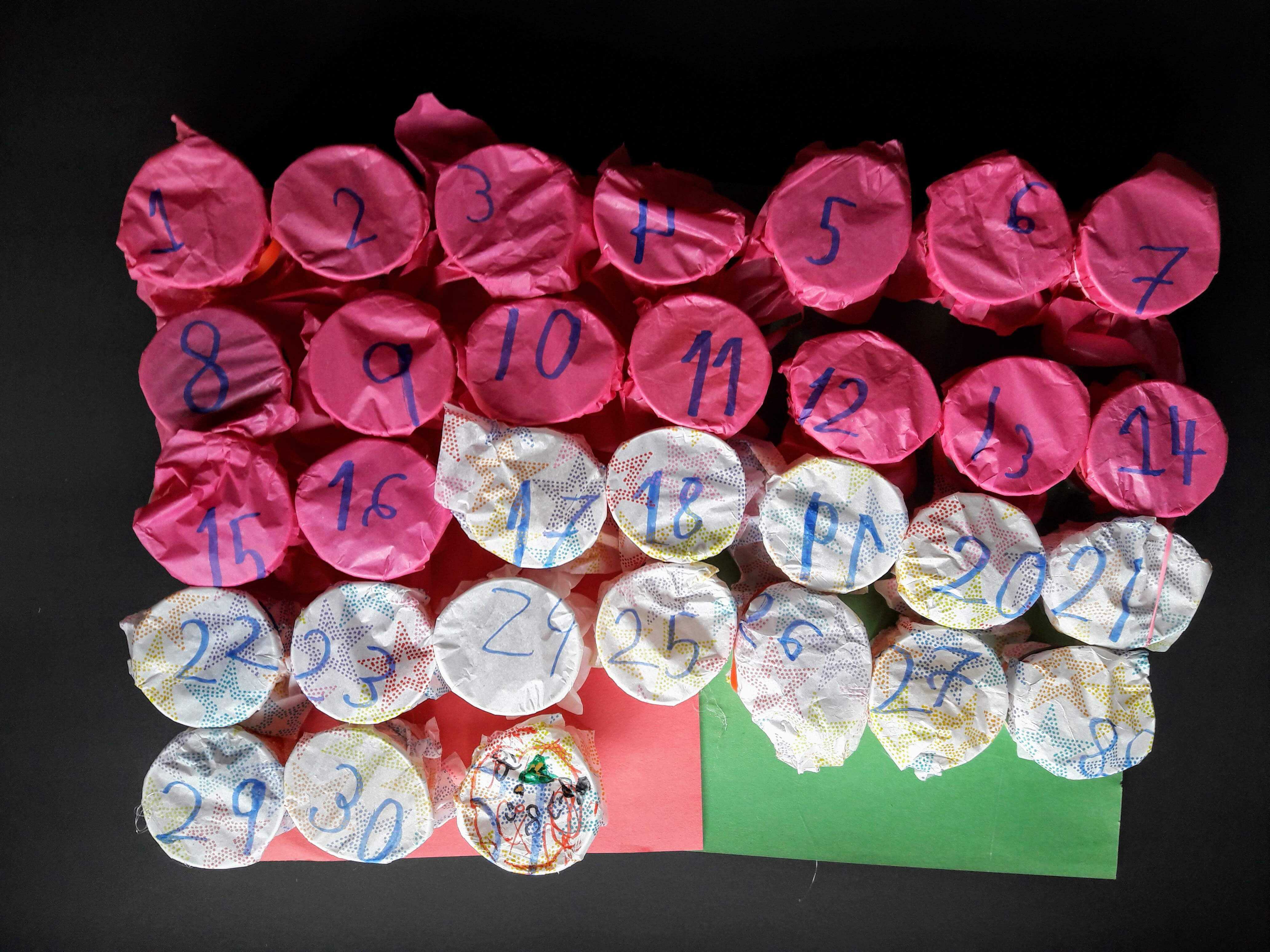
29. Make a Book or Notebook
Little kids may know their limitations when it comes to reading, but they will not be denied when it comes to writing! And when it comes to literacy, they find they are so empowered with hands on projects such as creating a notebook, diary or book. Encourage them to write something on the cover and staple some pages together. They can use colored pages, they can chose to decorate the pages, they can make drawings…anything goes.
30. Prepare Breakfast
Yes! Kids as young as 5 years old are capable of preparing a simple breakfast. They can chop, spread, decide what to make, lay the table, etc.
31. Prepare a Picnic
I have never met any kid who doesn’t LOVE picnics. On top of that if they are allowed to prepare the picnic, they are as happy as can be. They get to decide where to have the picnic, they can come up with a good place to carry it (a basket, a backpack, a box, paper bag?), and they get to decide what to bring and prepare the snacks or the meal.
Don’t forget the drinks!
32. Make Pizza
Choosing the toppings is really fun for kids and sharing a meal they made with friends or family is one of the best experiences.
This hands-on activity is great for little kids because they get to learn and understand what comes first and why, an essential skill when it comes to projects.
33. Make Cookies
Playing with dough is a very attractive activity for most kids, but making their own creations is so much fun. You don’t just get to play, you get to eat it too!
Whether you buy the dough already mixed, or they help you make it, this is a multifaceted project that little kids will remember. They may not be able to recreate it by themselves but the exposure to different kinds of learning is there.
34. Make an Obstacle Course
Finding the different elements that may constitute an obstacle can be challenging for kids. Provide a set of things that could be obstacles, like logs, bricks, upside down garden pots, etc. Once the kids decide where and how to use those elements, and they run out, they’ll have to think about what else to use and to use it to make it fun.
This is a great activity because ideally it is carried out outdoors, and it will get the kids outside everyday to play their course and build more obstacles.
35. Make a Maze
It could be a maze out in the backyard, or at the playground, or on paper…the possibilities are endless. The materials may range from sand to play-dough, or yarn, or just markers.
Making a maze is not easy, but you can really get lost in the process!
36. Make Slime
Even though it sounds mundane at this stage to make slime. For kids who have never made slime by themselves this is a project. Firstly, they have to remember the materials or ingredients. Then they need to remember in what order and what quantities to use. And finally, they will learn from their fails and success.
37. Make Squishies
Memory foam, acrylic primer or gel, and acrylic paint.
Kids can figure out what shape they want, paint and let dry. Chances are you have a piece of memory foam that can be cut up into several squishes. This is a hands on activity that kids like because who doesn’t love squishies.
38. Make a Mother’s Day gift or a Father’s Day Gift
For Mom make a face scrub by combining a little rose oil and vitamin E oil into cornmeal (the granular kind). Add a little powder cinnamon into into the mix.
For Dad take a look at our post Impressive Gifts for Dad that Kids Can Make.
39. Bath Bombs
This is a step up from Experiments. Here is what we use in order:
Baking soda
Corn starch
Citric Acid (we have links for a lot of these supplies in Absolutely Must Have Supplies)
Little bit of almond oil or coconut oil
A couple of drops of essential oil like mint, jasmine…They can chose the scent.
A drop of food coloring
A tiny bit of water
Have them mix it all in a bowl and kneed it with their hands, then pack it into plastic Easter eggs. Let dry for a few hours and they are ready to hatch!
What I notice is that after a couple of times kids remember what ingredients they need, and after a few times they remember the quantities, and they can remember all the steps.
So it’s one of the first real projects.
What they will get out of it: The love the sensation of the fizzling bath bombs in their bath, they love to gift them to friends and mom as well.
What they will learn from it: They learn that the key ingredient is citric acid, and they understand how the citric acid reacts with the baking soda when water is added. They understand this specifically because they see that by adding even just a little bit too much water, the citric acid will start to fizzle before the bath bombs is made.
What they will need to practice: They’ll need to remember the ingredients, the order of the ingredients and the amounts. They need to practice some dexterity by putting the mixture into the molds and taking them out of the molds. We use plastic Easter eggs as molds.
What they will need to learn: The careful balance between all the ingredients so that they get a good fizzle that last for a while.
40. Bird Feeders
This is another project-based activity for early learners. Once you show them what they need and how to do it, you may watch them one random day showing their friends how to do bird feeders, or able to take on
What they will get out of it: The fun of
What they will learn from it
What they will need to practice
What they will need to learn
41. Rubber-band nail art
This activity requires some dexterity. Provide a board or sample laminate from the hardware store. Some small nails with wide heads, colorful string, and maybe 3ven some paper or plastic flowers. The kids can draw the shape and hammer in the mails themselves, or you can draw a simple shape and set the nails about half an inch apart. All the kids need to do at that point is loop the string back and forth in any pattern or direction they want until the entire inside of the shape is covered with string. Stick some fake flowers on it and hung on the wall.
Alternatively for young kids that prefer to do it by themselves this one works very nicely because the nails are easier to hammer in and it uses rubber bands instead of string:
42. A Yarn Bowl
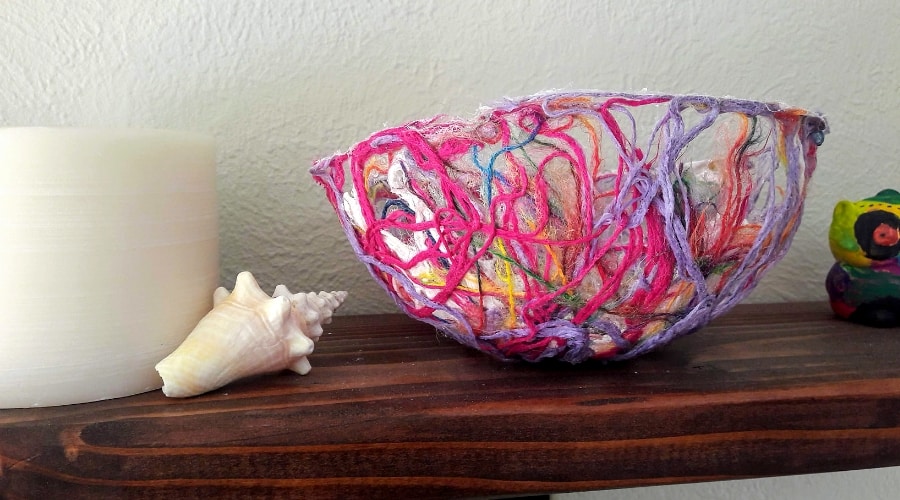
This is a decorative bowl and a very simple craft that is messy, colorful, and fun to make.
Supplies:
Different colors and textures of yarn
A metal bowl turned upside down and covered with plastic wrap
A mixture of warm water and corn starch
Spray bottle with water, white glue squirt bottle
Mix the corn start homeschooling and water in a large bowl. Ask your kids to cut pieces of yarn or if the they are young you can provide the yarn cut for them to soak into the mixture and start covering the bowl with yarn. Keep going until all the sides are covered. Set to dry or leave out in the sun. When it’s dry, take the spray bottle and spray all over, specially the areas that didn’t stick, pour the while glue all over and dab with a paint brush until the yarn is all wet and covered with the glue and padded down. When it’s completely dry take out of the mold.
43. Marshmallow Constructions
This is a really fun activity. I was very against it at first because I thought kids would just want to do it because it involves popping a marshmallow in your mouth every once in a while. But what I found out was that a) If you tell them that they cannot use eat the marshmallows, kids will not respect the rules, b) The kids are so enthralled in the building and design of their creation that they forget about the sweet attraction. At least until they are done.
This activity is easy for a 5 year old, even 4 year old can build something. As they practice and grow they get better at making joints that will last and hold their construction.
They get exposure to creating shapes and angles.
What they will get out of it: The process is very rewarding for kids. They often want to keep their creations and admire them until, well, until the ants come.
What they will learn from it: They learn how to make joins, which angles are better for the forms they want to make. They learn three dimensional design.
What they will need to practice: Sometimes the instruction may take a colossal shape but if you look closely you can see the progression in their own learning. They practice technique over and over.
What they will need to learn: At this age and for this activity they done have any requirements for this type of project.
Learning through projects is a great way to learn because there is a process that is fun and the end result is always rewarding in one way. Whether it is watching the birds eat the seeds from the bird feeders they made to making some money from selling their invention at a fair, project-based learning provides a means to an end.
As the guide, the adult should make the learning points fun and light. But be firm and gently show kids the importance of learning certain things that come up.
I think with all these ideas a child could do at least one project per month. We have done a lot of these over the years, and some we did when kids were little and then again when they were a little older. For example, “Starting a Business” is a project our daughter did first time when she 6 years old. Then she did it again two other times and came up with different ideas and learned more things every time. For example, the first time she only practiced sum, and was introduced to giving change, but she learned a lot about the commitment that is needed to pull it together. However, she did not understand what “profit” meant or what “marketing”. She was too young to multiply and divide.
Also, I have tried to include different levels of difficulty so the projects are age appropriate starting with the top ones for older kids, and at the end the projects for the little ones. But please take a look at Favorite Activities For Preschoolers and Beyond which is packed full of hands on activities and crafts for the 4 – 6 year old range.
Like I describe with the Business Project example, some of these can be revisited. They can be simple when they are younger and more ambitious as the kids get older, and therefore more parts of the project and therefore more learning.

